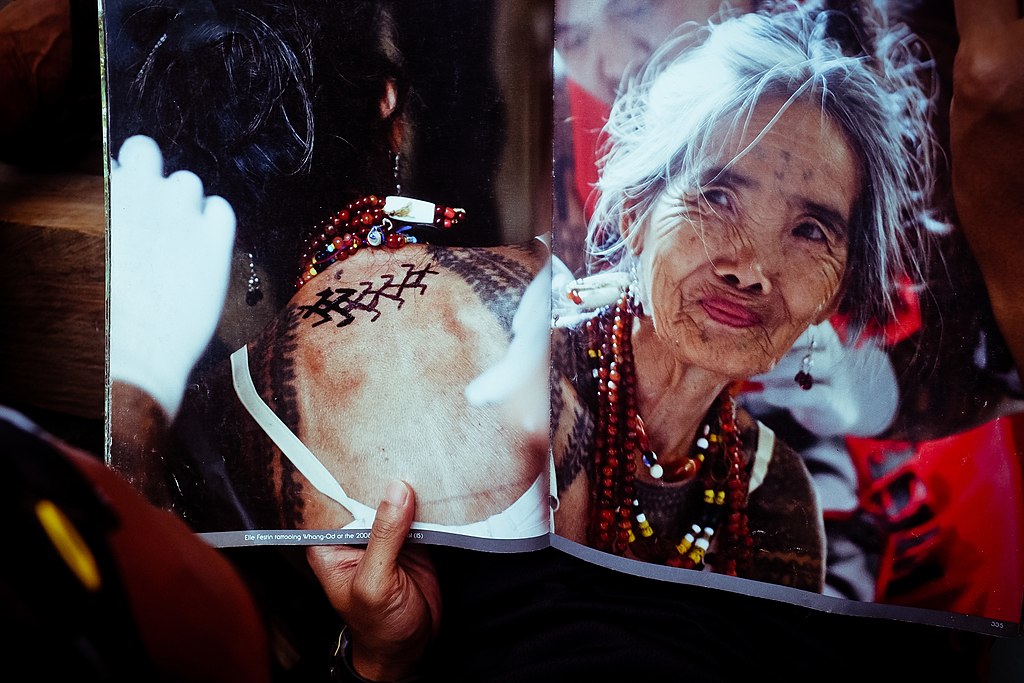Also known as Maria Oggay, Whang-Od is often described as the last and oldest mambabatok, and the centenarian has been tattooing skin since the age of 16 – using extremely delicate tools that require the most skilled hands.
She began her career under her father’s mentorship. At the time, she was the first and only female mambabatok around. She would usually tattoo sacred symbols of ancestors on people who are about to cross a major threshold in their lives, like men becoming headhunters, for instance. For women, tattoos would be done in order to promote fertility and beauty.
 Depending on the complexity of the tattoo, Whang-Od would sometimes spend days on just one piece. So how does it work? This excerpt from the Vogue Philippines story explains it perfectly:
Depending on the complexity of the tattoo, Whang-Od would sometimes spend days on just one piece. So how does it work? This excerpt from the Vogue Philippines story explains it perfectly:
“An aide procures an unused gisi, a bamboo stick with a thorn attached to one end, while Whang-Od traces the pattern on Sela’s arm using a length of grass dipped in the soot and charcoal mixture. Holding the inked gisi in her left hand, she uses a larger stick to whack it with her right hand, driving it over a hundred times per minute into the flesh until the three dots are filled and oozing with blood and ink. She dabs at them with a wet wipe before deciding to go over the freshly wounded spots again for good measure.”
 Since the outlawing of headhunting back in the 1900s, Whang-Od has taken on different clientele in the form of tourists who come to visit her village in Buscalan.
Since the outlawing of headhunting back in the 1900s, Whang-Od has taken on different clientele in the form of tourists who come to visit her village in Buscalan.
The art of batok can only be passed down to people in the same bloodline. Since Whang-Od never had any children of her own, she decided to pass on the craft to her grand-niece, Grace Palicas, who was 10 years old at the time. Now 26, the new apprentice is continuing Whang-Od’s legacy.
This move is quite significant, seen as a way for Whang-Od to smash the patriarchy by ensuring her next apprentice is also a woman.
According to sea.mashable.com














